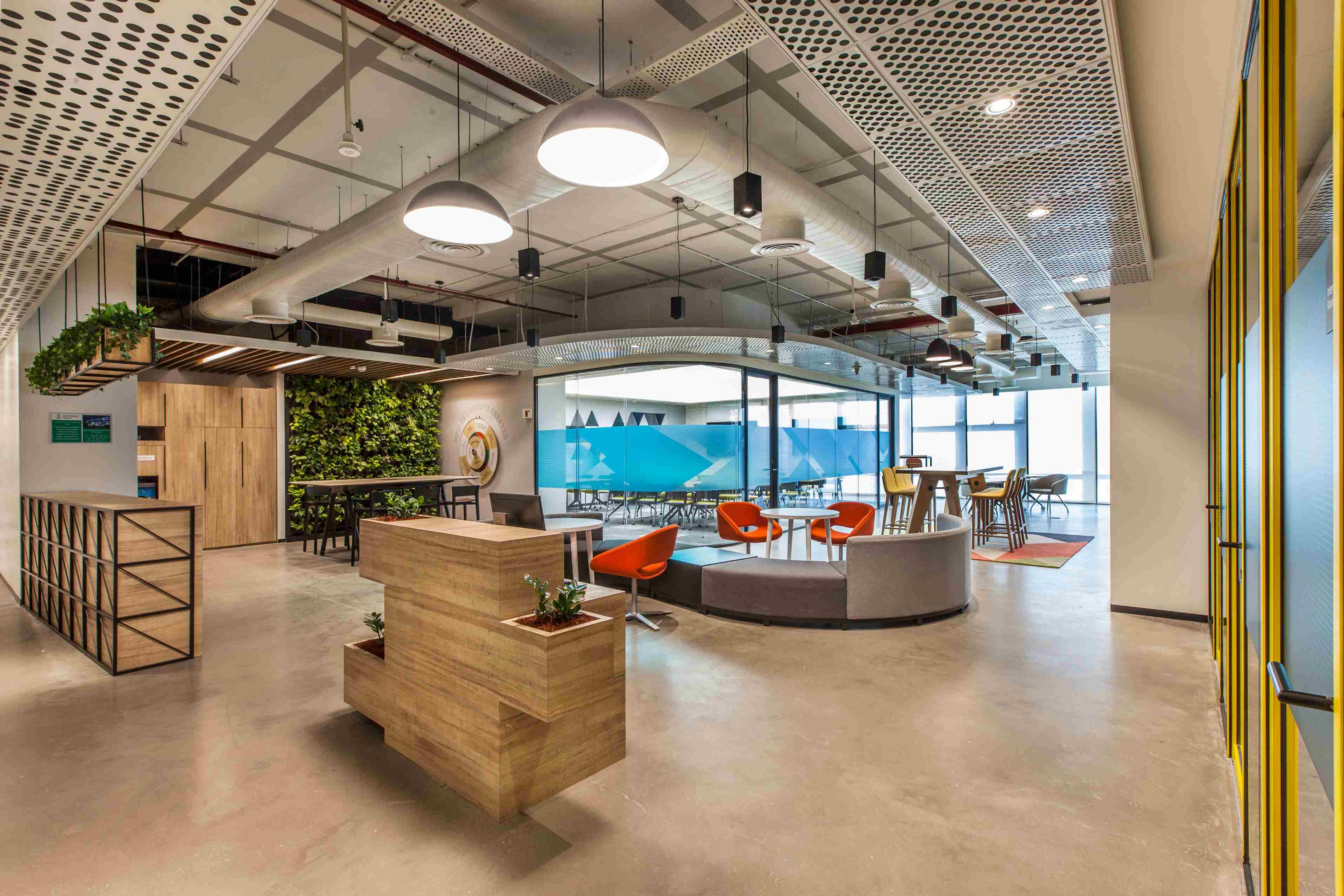Engaging talent, inspiring client confidence: Here are 3 workplace trends that are shaping the modern financial services office
What did the typical day in a financial services firm look like before the pandemic? Fast paced, straddling experience and youthful energy and driven by a client-focussed approach, the leading financial services office reflected the dynamism and buzz of a high-growth industry. However, much of the workplace design was still a throwback to an earlier era of the industry, signified by a traditional, static approach to the workday and the workforce.
In the months after the pandemic began, financial services has seen accelerated trends in the industry, such as the shift towards fintech, the growth of AI-assisted operations and greater focus on customer experience. These trends, along with the unique productivity, engagement and well-being challenges faced by the post-covid workforce, signal the rise of a new kind of workplace for the industry. We take a look at this new avatar of the financial sector office which straddles diverse formats and melds them together for the new world of work.
The open plan office and closed meeting rooms are balanced by activity-based workplace choices
Unlike the traditional financial firm, closed work cubicles are no longer the de rigueur in the modern financial firm. However, the open plan workplace isn’t the norm either.
Recently, we helped global risk and strategic consulting firm Control Risks transition from a traditional workspace to a new agile workplace with choice-based environments. To enable collaboration and communication, we designed informal huddle spaces as well as spacious boardrooms with operable walls, which can be opened up or segmented off. For confidential calls and teleconferences, well-equipped phone booths offer both comfort and privacy.
Keeping in mind the need to ensure employee wellbeing, all spaces are designed to enjoy maximum sunlight flooding in from the expansive windows. The overall layout is designed in accordance with the principles of Feng Shui, and includes indoor greenery, soothing light fixtures and comfy, informal seats, as well as a quiet room.
When Azqore, a technology services company for financial firms, was moving into its new office space in Singapore, it wanted to replace the traditional mindset of private offices equating to seniority. We helped them make this cultural shift towards open-plan seating in a phased manner. For instance, team leads who had grown accustomed to having their own office space were given desks with higher partitions. As for the CEO’s office, it is designed to be converted into a meeting room when he is travelling.
One thing to note — set up an open plan or agile work environment only for teams with job roles that would truly benefit from it. For instance, open plan spaces are the preferred choice for administrative and support staff, who need to interact with colleagues from multiple teams everyday. Assigned seating is the preferred choice for IT & HR teams. Adopting a blended format assures privacy for handling sensitive customer data or running important client meetings as well as the informality and openness needed for collaboration, learning and ideating.
Attention to the front-of-house is matched by robust back-of-house spending on technology
For a client-focused industry like financial services, the polish and elegance of the front office is a vital driver of operations. Here we see bespoke design reflecting the firm’s corporate identity, with premium stone, metal and timber finishes and distinctive art or architectural features. A mix of lounge-like configurations, well-equipped meeting rooms and AI-assisted pantry spaces help clients feel at ease while also ensuring facilities to conduct business meetings efficiently.
The reception and lounge space at Bank of Singapore reflects this trend, offering formal and semi-formal spaces to welcome clients as well as numerous private meeting rooms for advisors to carry on discussions with their clients.
The back of house design is dominated by maximising staff efficiency with a variety of workstyle choices. For instance, at Transunion Chennai, an aesthetic that mixes fun and formality was layered over a functional workplace comprising individual workstations, huddle spaces, formal meeting rooms and cafe-style spaces that offer employees a greater variety of spaces to learn, focus, collaborate or socialise from.
Focus on productivity is accompanied by an emphasis on well-being and attracting talent
The fast-paced, high-productivity workplace has been a major factor in driving revenue and improving operations in the financial industry. In the past few years, there has also been significant focus on creating innovative spaces that foster innovation and learning as well, which is key to attracting and nurturing young talent.
TNG’s combined workplace model has acted as a fintech laboratory space, with the ‘Wall Street Factory’ incubator space becoming a focal point for meetings, discussions and brainstorming sessions with the most brilliant minds in the industry. To encourage collaboration, we designed three ‘Sandboxes’, flexible meeting rooms with operable partitions and lightweight furniture that can be altered and reconfigured in different ways to cater to various kinds of meetings, discussions and training sessions.
More recently, the pandemic and recent global conversations of diversity and inclusion have also thrown light on the need for a more sustainable and inclusive workplace. The Northern Trust office in Pune has made this the key focus in all employee-oriented areas with various design elements engineered around meeting the special needs of the workforce and engaging them. For instance, wayfinding and enabling design that engage sight, sound, touch, smell, and taste make the workplace come alive for differently-abled employees. Height-adjustable desks enable ergonomic workstyles, while a mothers’ room, wellness rooms, meditation rooms, and prayer rooms help to provide quiet times, peace and wellbeing for employees.
To date, Space Matrix has completed close to 200 projects in the financial services industry totalling 5 million sq ft, impacting 50,000 employees in 10 cities around the world. We’ve worked with dynamic financial services firms like Standard Chartered, The World Bank, Transunion and ANT Financial to push the frontiers of workplace design and employee engagement. We can talk about your firm’s workplace strategy, too.





